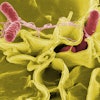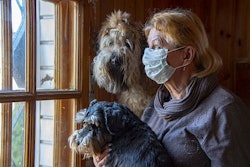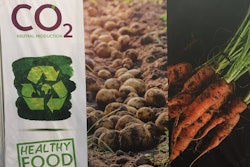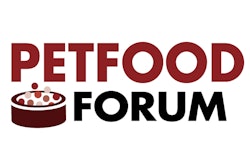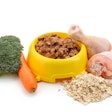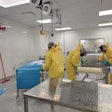The purpose of this document is to share recommendations for addressing shortages of personal protective equipment (PPE), cloth face coverings,1 disinfectants, and sanitation supplies in the food and agriculture industry in order to help maintain employee safety, continuity of the food supply, food safety, and employee/ consumer confidence.
Background
The COVID-19 pandemic has caused shortages in PPE, cloth face coverings, disinfectants, and sanitation supplies. Some food production stakeholders face challenges procuring adequate materials due to increased demand across all economic sectors and the disruption of traditional supply chains. These challenges
may, in turn, cause interruptions in the food supply chain. Disruptions to the supply of food and agricultural commodities or the inputs needed to produce them, however minor, can cause significant ripple effects through all nodes in the supply chain, from growers and suppliers through processors and distributors to retailers. Accordingly, the FDA and USDA has developed the following recommendations, taking into account input from the Food and Agriculture Sector Coordinating Council.2
Prioritization Recommendations
As PPE, cloth face coverings, disinfectants, and sanitation supplies become available, it is highly encouraged that available supplies be distributed with first priority to the following industries:
- Hospitals, healthcare, long-term care, retirement homes, hospice, and other healthcare-providing establishments and the emergency responder community.
- The Food and Agriculture Sector (as well as the other Critical Infrastructure Sectors), including food manufacturers/producers, suppliers of agricultural inputs and facilities that store, process and/or market agricultural products, grocery stores, food retail, food service, and food storage and distribution.
Note: Food and Agriculture Sector entities should follow guidance provided in the Federal Emergency Management Agency fact sheet, entitled Coronavirus (COVID-19) Pandemic: Addressing PPE Needs in Non-Healthcare Setting, when considering their PPE requirements. All efforts should be made to identify alternatives to medical-grade PPE3 (such as N95 respirators), disinfectants, and/or sanitation supplies critically needed by the Healthcare and Public Health and Emergency Services sectors. Occupational Safety and Health Administration (OSHA) information may be helpful when assessing appropriate PPE.
Sourcing of PPE, Cloth Face Coverings, Disinfectants, and Sanitation Supplies
Sector entities can apply the following considerations when attempting to source supplies:
- Continue working with normal and alternate private-sector suppliers to obtain PPE, cloth face coverings, disinfectants, and sanitation supplies. It may be necessary to identify multiple options for suppliers and prioritize near-term versus long-term needs.
- If suppliers are unable to provide for your needs, and the PPE and/or cloth face coverings are urgently required, submit a request for assistance to your state emergency management agencies. If the state is unable to address the PPE and/or cloth face covering shortfall, the state should submit a request for support to their FEMA Regional Response Coordination Center.
1 The Centers for Disease Control and Prevention (CDC) advise the use of simple cloth face coverings to slow the spread of the virus and to help people who are unaware they have the virus from spreading it to others. FDA developed, in collaboration with CDC, a quick reference guide to respirators, masks, or cloth face coverings potentially worn by workers in the Food and Agriculture Sector.
2 The Food and Agriculture Sector is one of the 16 critical infrastructure sectors, and workers within the sector are included in the Guidance on the Essential Critical Infrastructure Workforce, Revision 3.1.
3 Defined in the “Memorandum on Allocating Certain Scarce or Threatened Health and Medical Resources to Domestic Use” as: (a) N95 Filtering Facepiece Respirators; (b) other filtering facepiece respirators; (c) Elastomeric, air-purifying respirators and appropriate particulate filters/cartridges; (d) PPE surgical masks, including masks that cover the user’s nose and mouth and provide a physical barrier to fluids and particulate materials; and (e) PPE gloves or surgical gloves, including those defined at 21 CFR 880.6250 (exam gloves) and 878.4460 (surgical gloves) and such gloves intended for the same purposes.
www.fda.gov www.usda.gov

